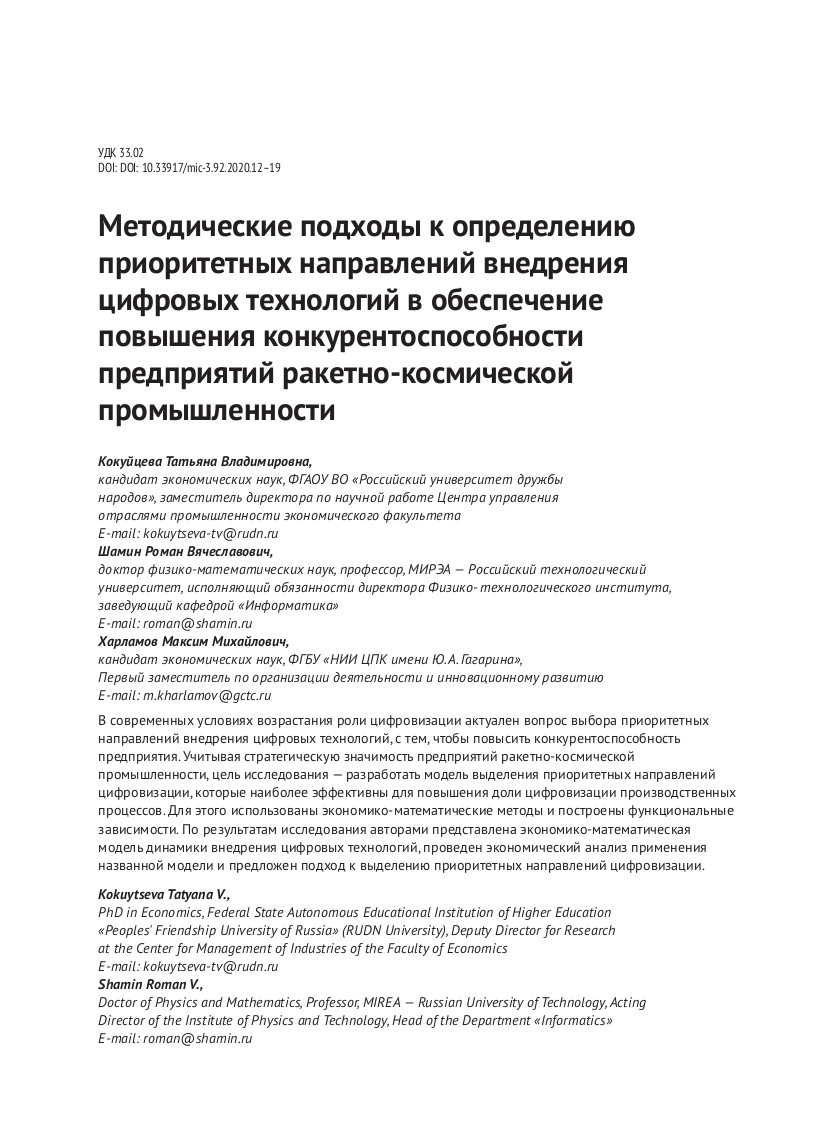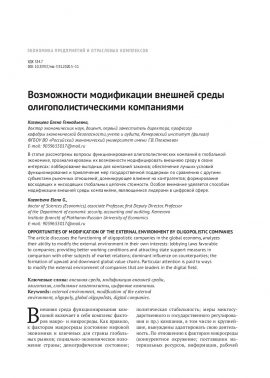Methodological approaches to identifying priority areas for the digital technologies implementation to ensure the competitiveness of the aerospace industry enterprises
DOI: 10.33917/mic-3.92.2020.12-19
In modern conditions of increasing role of digitalization, the issue of choosing priority areas for the digital technologies’ implementation is urgent in order to increase the competitiveness of the enterprises. Given the strategic importance of the enterprises of the space industry, the aim of the study is to develop a model for highlighting the priority areas of digitalization, which are most effective for increasing the share of digitalization of production processes. For this, economically-mathematically methods and functional dependencies are used. Based on the results of the study, the authors presented an economic and mathematical model of the dynamics of the digital technologies implementation, the economic analysis of the application of this model is carried out and proposed an approach to highlighting the priority areas of digitalization.




